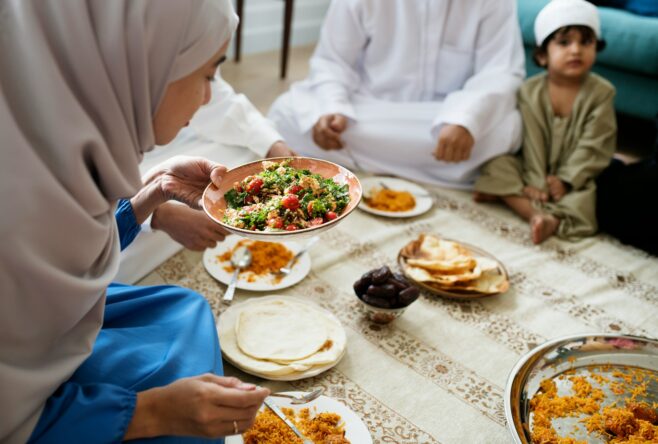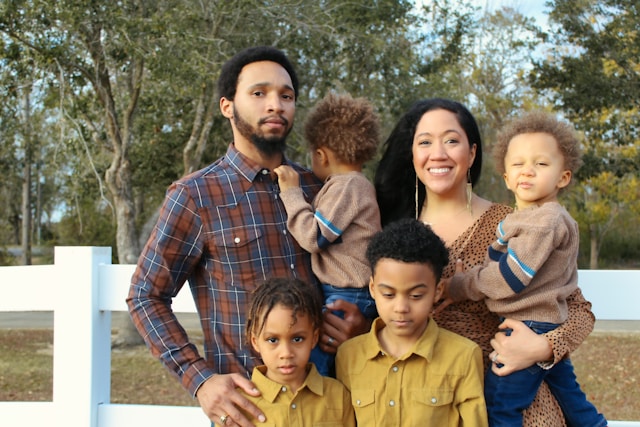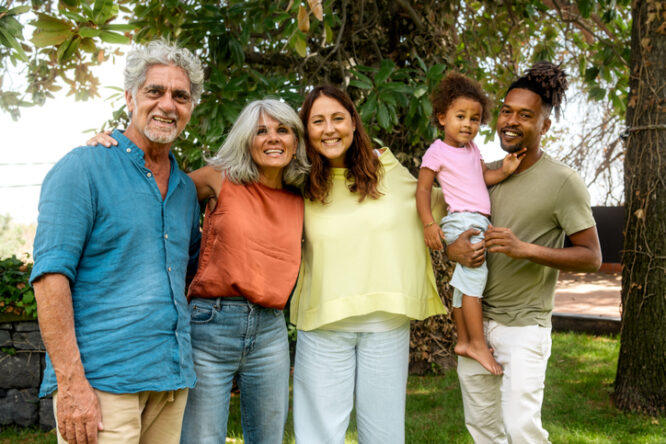Kids don’t just wake up proud of who they are—it’s something that’s shaped over the years, in small moments and shared experiences.

Whether it’s their heritage, culture, family history, or identity, helping them feel proud of where they come from isn’t about big gestures. It’s about making their background feel valuable and alive in the everyday. In a world that often pushes for sameness, giving your child a deep connection to their roots is one of the most powerful gifts you can offer. Here’s how to do exactly that in some very simple, straightforward ways.
1. Talk about your family history like it’s a story worth telling.

Kids love stories, and the more you frame your family’s background as something full of interesting people, choices, and moments, the more engaged they’ll feel. Even if your past includes struggle or silence, telling it with warmth and humanity helps them see where they fit in that bigger picture.
You don’t need a detailed family tree to do this. Share little memories, explain why certain traditions exist, or tell them about the quirks of a grandparent. These fragments give them roots they can actually feel, not just facts to memorise.
2. Cook the food that shaped your childhood.

Food is one of the easiest, most sensory ways to connect to identity. When you make the meals that reflect your background, you’re not just feeding your child—you’re passing down culture in a way that feels natural and comforting.
Even if your culinary skills aren’t perfect, the smells, tastes, and rituals around food tell a story. Let your child get involved, talk about what these dishes meant to you growing up, and don’t worry if it’s not picture-perfect. It’s the feeling that sticks.
3. Let them see representation that looks like them.

Books, films, and shows that reflect your child’s background can have a huge impact. When they see people who look like them, speak like them, or live like them being celebrated, it normalises their identity and reinforces that they belong. You don’t need to curate their every media experience, but actively choosing content that reflects their roots adds quiet affirmation. It tells them, “Your story is being told, and it matters.”
4. Visit places that hold meaning to your family or culture.

You don’t always need a big international trip—sometimes even a walk through a family neighbourhood, a local cultural centre, or a place tied to your history can open the door to connection. Let them see the places where your story began or changed.
When your child can picture the environments that shaped your family, it makes everything feel more tangible. It also gives them a chance to ask questions and make their own memories linked to something bigger than themselves.
5. Teach them how to respond to ignorant comments without shame.

Sadly, pride doesn’t always come naturally when kids face teasing, microaggressions, or confusion about who they are. Helping them navigate those moments with grace, honesty, and self-respect can stop the shame spiral before it starts. Role-playing or simply talking through possible responses—without placing pressure—builds resilience. When they know it’s okay to be different, and they’re allowed to feel proud in the face of misunderstanding, that strength sticks with them.
6. Encourage questions, and answer them openly.

Kids are naturally curious, and they will have questions about their background, especially if it differs from their peers’. Don’t shy away from tough or emotional topics. Answer in a way that’s age-appropriate, but honest enough to keep trust strong.
Every question is a chance to show them that their story isn’t something to be embarrassed about—it’s something to explore. If you don’t know the answer, that’s okay too. Look into it together. That shows them learning about your roots is a lifelong process, not a one-time lesson.
7. Celebrate cultural holidays in your own way.

You don’t need a big party or perfect traditions to make cultural holidays meaningful. Even a small gesture—lighting a candle, playing a song, cooking a dish—can leave a deep impression if it’s done with intention. When you bring these moments into your family rhythm, you’re reinforcing that your culture is something to honour, not hide. Kids pick up on that energy more than you think.
8. Let them create their own version of pride.

It’s easy to want your kids to express pride the same way you do—but they might connect to their roots differently. Maybe they love the music, but not the traditions. Maybe they care more about the language than the food. That’s okay. Letting them build their own relationship with their background creates true ownership. It’s not something they feel forced to adopt—it becomes something they want to protect and carry with them.
9. Talk openly about what’s hard, not just what’s beautiful.

Not all family or cultural histories are simple or joyful. Sometimes they include loss, conflict, or unfairness. When you speak about those parts without bitterness, but also without sugarcoating, it shows your child that pride isn’t about perfection. They learn that identity includes struggle, and that’s not something to be ashamed of. It’s part of what makes their background rich and real. That honesty becomes a foundation they can stand on.
10. Show them how their roots connect to the world around them.

Help your child see the ways their story fits into bigger global patterns—whether it’s migration, resilience, creativity, or activism. It gives them a sense of belonging that stretches beyond your household or even your country. That kind of framing helps them understand their place not just as an individual, but as someone shaped by a wider legacy. It makes their identity feel not just personal, but powerful.
11. Avoid using shame or guilt to keep them connected.

It’s tempting to say things like, “You should know this,” or “You don’t care about where you come from,” when your child pulls away from their background. But guilt rarely creates genuine pride—it usually just creates distance. If you sense disconnection, get curious instead of reactive. Ask what they do feel connected to. Listen without judgement. That gives them space to explore their identity in a way that doesn’t feel like a chore or a duty.
12. Lead by example—show your own pride in subtle, consistent ways.

Your child will notice how you talk about your own identity. If you speak about it with warmth, respect, and joy (even when there’s complexity), they’re more likely to follow suit. You don’t need to give speeches—just let them see you care.
This might look like playing music you love, speaking your language at home, or simply smiling when they ask about your past. The goal isn’t perfection—it’s presence. Let them see that you value where you come from, and they’ll start to value it too.
13. Let pride grow in its own time.

Some kids feel a strong connection to their roots early on. Others take years to come around, and that’s okay. Pride that’s rushed or pushed can backfire. But pride that’s nurtured gently? That lasts. Trust that your effort matters, even if the results aren’t immediate. Kids absorb far more than they show. By planting seeds without pressure, you’re giving them the best chance to grow into their identity on their own terms.




